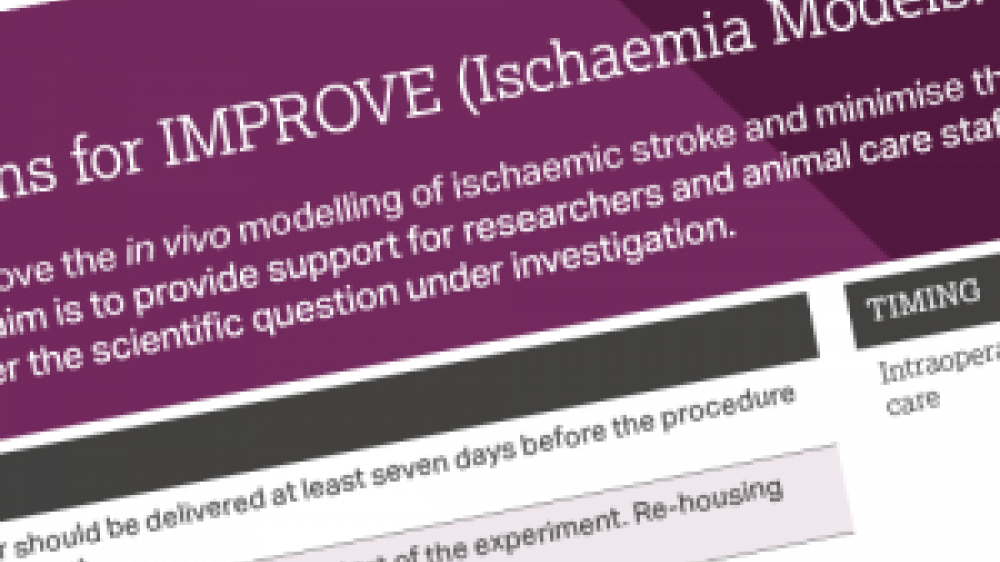IMPROVE-ing animal welfare in experimental stroke research

Over the last two years, representatives from the UK’s stroke research community have been working, in a collaboration led by the NC3Rs, to improve the welfare and increase the scientific value of rodent models of stroke.
The findings from the collaboration - The IMPROVE Guidelines (Ischaemia Models: Procedural Refinements Of in Vivo Experiments) - have been published in the Journal of Cerebral Blood Flow and Metabolism.
Stroke is a serious medical condition, the fourth cause of death in the UK and a leading cause of disability with almost two thirds of stroke survivors leaving hospital with a disability. It is most often caused by the blocking of blood vessels supplying blood to the brain (ischaemic stroke). Research on ischemic stroke relies on the use of rodent models. These involve the transient or permanent blocking of a major cerebral artery, using mechanical or pharmacological methods. The models can cause significant suffering to the animals used.
The guidelines’ authors which included stroke researchers, vets and animal care staff took a holistic approach, reviewing all aspects of the procedures involved from basic requirements pre-surgery, selecting the most appropriate anaesthetic and analgesic regimen, as well as intra-operative and post-operative care. The guidelines set out 43 recommendations for best practice for the most commonly used mouse and rat stroke models. While the focus is on refinement, the guidelines highlight many sources of variability commonly present in experimental stroke studies. This allows researchers to make informed decisions and either reduce the variability or account for it in the design and analysis of the experiment, allowing neuroprotective effects to be detected with fewer animals.
The guidelines also include a table of clinical signs in animals following experimental stroke surgery, presented as a ‘traffic light’ to reflect the severity of the signs and the remedial actions and interventions that should be taken to minimise suffering.
Paper: Percie du Sert N et al. 2017. The IMPROVE Guidelines (Ischaemia Models: Procedural Refinements Of in Vivo Experiments). J Cereb Blood Flow Metab 37(11): 3488-517. doi: 10.1177/0271678X17709185
Poster: An A3 poster summarising the IMPROVE guidelines can be downloaded using the link below. This provides a useful reference for researchers, animal welfare staff and vets.
More background for this project can be found on our science page: Rodent models of stroke.
1Stroke Association. State of the nation: stroke statistics, 2017. Available at: https://www.stroke.org.uk/resources/state-nation-stroke-statistics.
